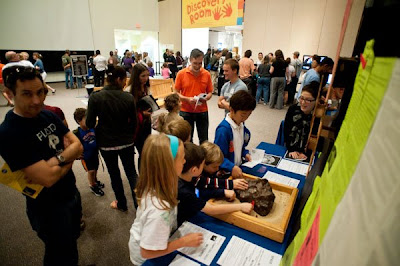Jesus Martinez says his life is marked by places where he has lived. “When you are a child you want to be part of a place. Have some stability.” he says.
After he was born, his family lived in Madrid for five years, then Germany for three years and after those, four years in Mexico. Then he went to Seville for College, expending his last year in Germany, and now he is 26 and is in Gainesville for his PhD.
After he was born, his family lived in Madrid for five years, then Germany for three years and after those, four years in Mexico. Then he went to Seville for College, expending his last year in Germany, and now he is 26 and is in Gainesville for his PhD.
The reason, at least in the early years, was his father. He is a physicist, so his life and his family’s, was conditioned by the requirements of an early scientific career. “My father was anomalous in the scientific world, because I was born when he was only 20 years old, so I had to follow him: first his doctorate in Madrid and then several post-doctoral contracts.” Jesus explains.
With this background, is natural that young Jesus didn’t want to be a scientist. But, when he was seventeen and had to decide what to study in College, he chose physics. “I realized that I really liked it. I guess I knew what it was and had lived with it all my life to have it very clear. Also, as an adult, I started to value the great experience that has been to grow up in different cultures.” he admits.
His main motivation was, and still is, to understand how the universe works. “To answer the great questions: where does the universe come from and how does it work. On graduate school I decided to focus on the biggest scale of all that, which is astrophysics or cosmology.”
Jesus’ PhD is funded by a grant that UF gives each year to a Spanish student, as part of its participation on the Gran Telescopio Canarias telescope, the world largest optical telescope, built in the Canary Islands (Spain).
He had another offers in Germany but he decided to come here for many reasons. First he had more freedom to choose for his research. “Here is like having a menu to choose from. In Spain and in Europe, grants are subject to a specific project, so you cannot choose. I also wanted to go to a new place.” Jesus says. “A thing I do really like here is that everybody encourages you to go on with your research. People are very supportive.”
This year, Jesus has published his first paper, based on data from the GTC. “My advisor, Rafael Guzman, and I sent a proposal and it got accepted. Then I had to analyse all the data and we had very good results. This was a very long process, especially until it got published.”
Jesus feels that the moment when he was told his paper was accepted for being published was the best of his recently started scientific career: “The reason to be of a scientist is to publish papers. You can do a lot of work, but if nothing gets published, is like you haven’t done anything. It doesn’t count. One doesn’t get to publish very often, so it’s always great news.”
Jesus says he's happy to be an UF astronomy graduate student. “There are many good astronomy departments in the US. Here we are among the top ones and we have access to the GTC. I am one of the fortunate ones that have had access to the data and could use them for my thesis. This is something that in another institution I probably couldn’t have done.” As a final conclusion, he says “If you like science and know what to expect from a scientific career, go for it.”














